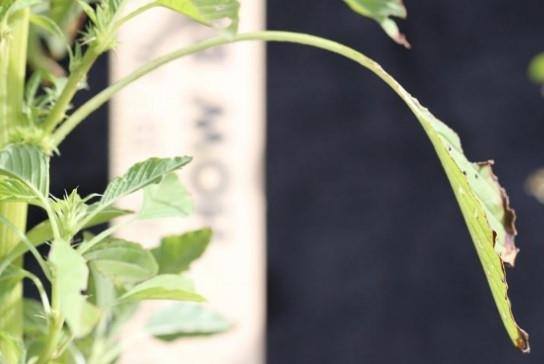Palmer amaranth is in the pigweed family. The weed has a lot of close relatives which can easily be confused for Palmer amaranth, the most commonly confused being common waterhemp. Other species include spiny pigweed, tumble pigweed, smooth pigweed and redroot pigweed.

Figure 1. Small Palmer amaranth plant in sunflower field. Courtesy: Paul O. Johnson.
What to Look for When Scouting

Figure 2. Palmer amaranth has these spiny growths between the stem and petiole; waterhemp does not. Courtesy: Paul O. Johnson.
There is no one thing to look for that is a sure sign that a plant is Palmer amaranth. However, when scouting for Palmer amaranth, there are some physical characteristics to look for as follows:
- The area where the stem connects to the petioles will have spines on it (Figure 2).
- Some of the petioles (the short stem from the main stem to the leaf) will be a lot longer than the leaf length (Figure 3).
- The leaf is more cordate (heart-shaped) than waterhemp, which is more elliptic (oblong).
- The Palmer amaranth head will be long, and, if it is female, the plant will also be spiny.

Figure 3. Palmer amaranth has a longer petiole than leaf. Waterhemp is the opposite. Courtesy: Paul O. Johnson.
Source : sdstate.edu